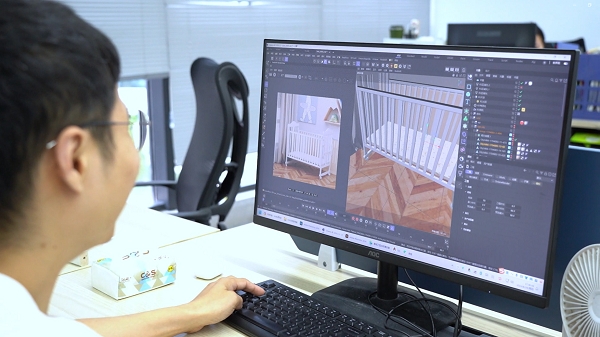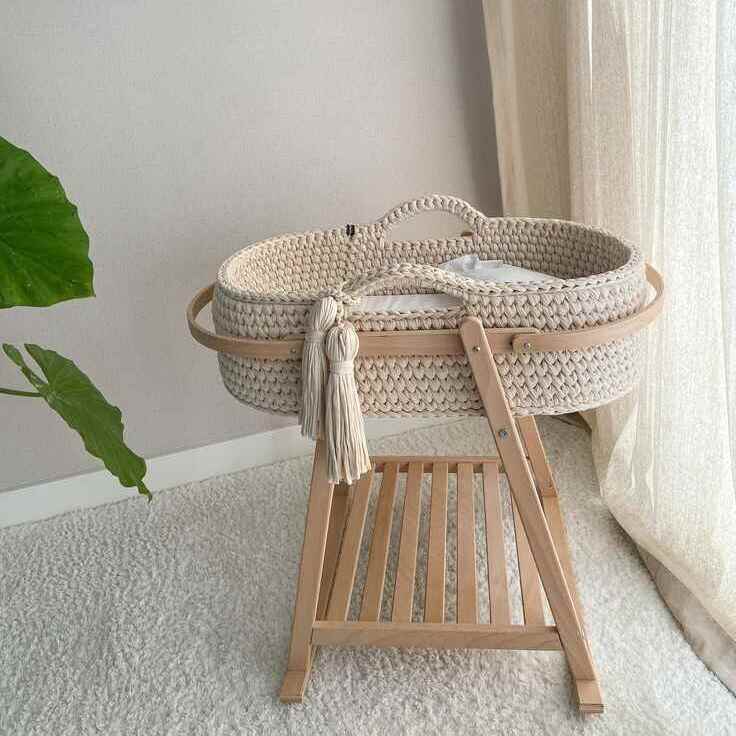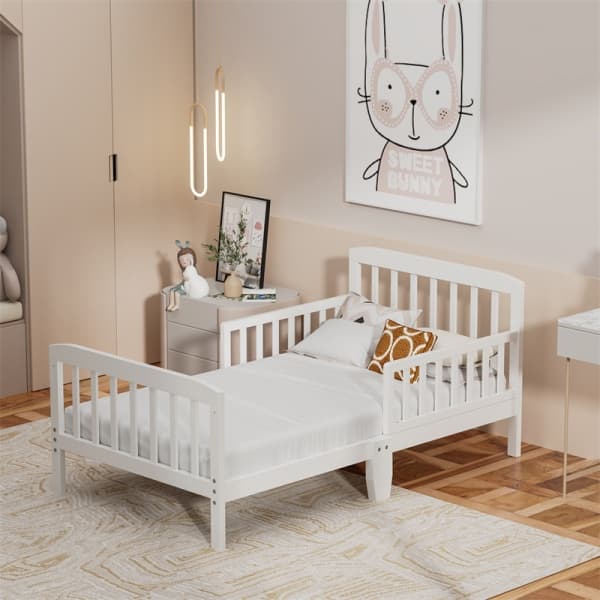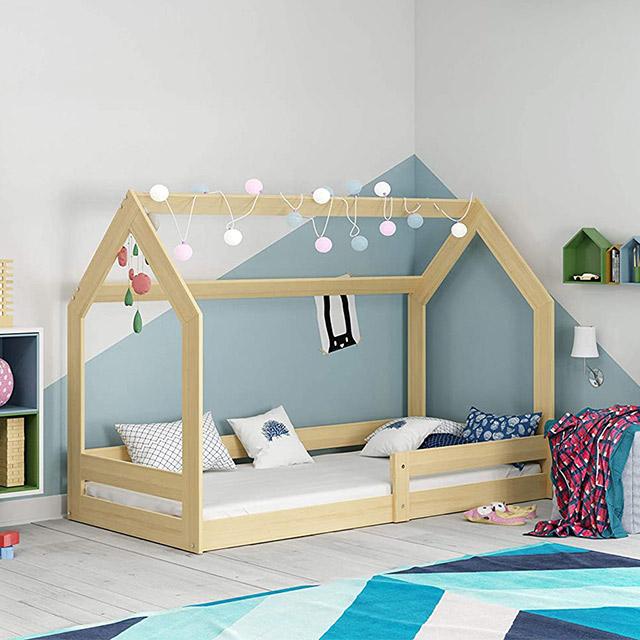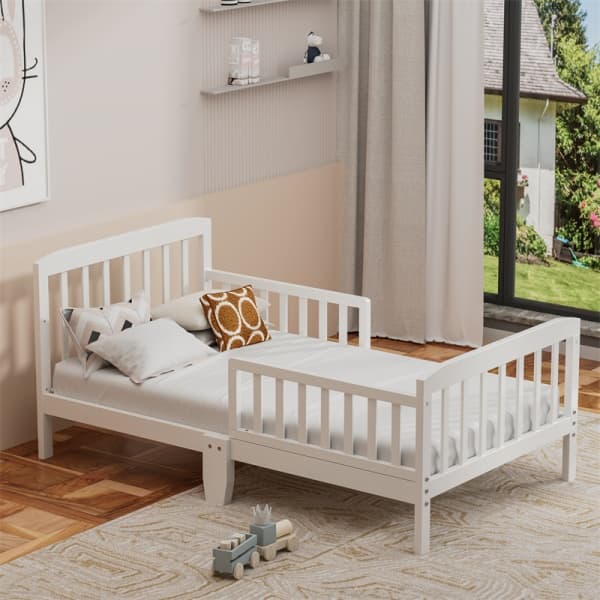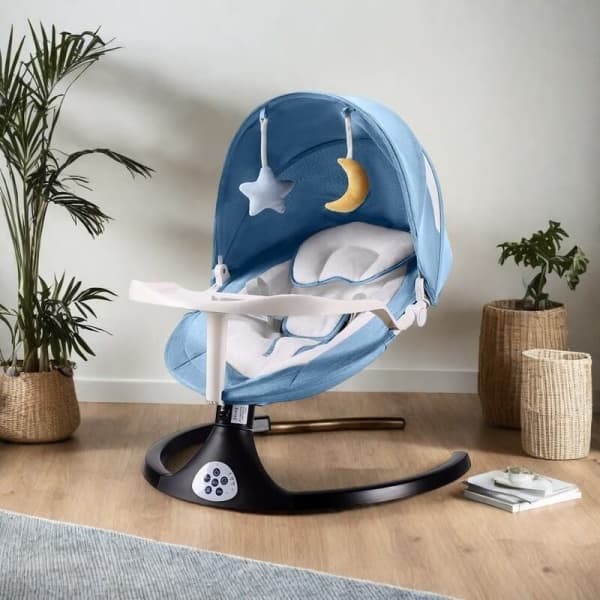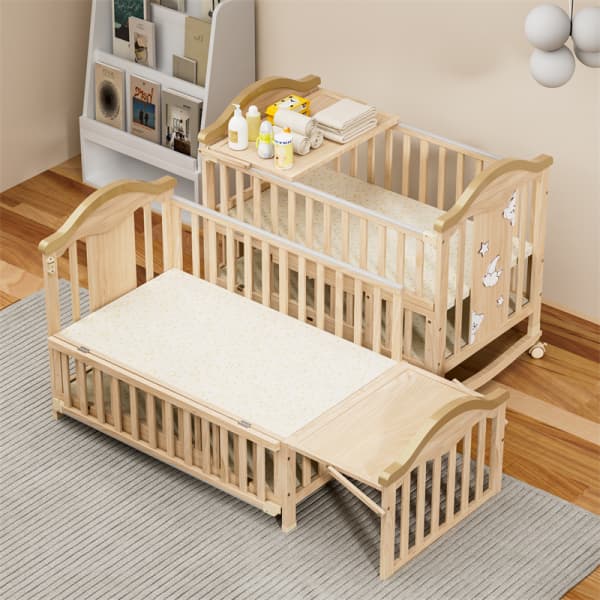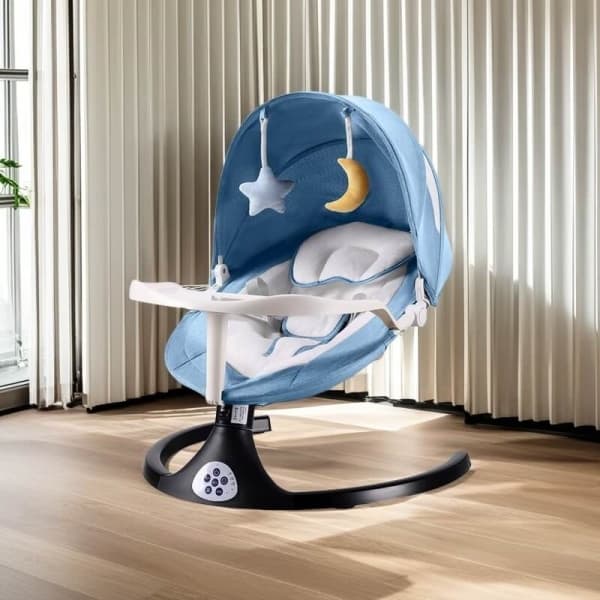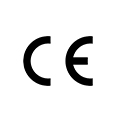After your baby is born, where do you plan to let him or her sleep? A bassinet is one of the many product options on the market. Do you need to buy a bassinet?
Of course, like most parenting decisions, this decision is not black and white. So, it is wise to take a minute and consider the features and benefits that bassinets offer given your needs and that of your baby. Your findings will go a long way in helping you make the right choice.
Are you not in the mood to make a pros and cons list? Worry not. They say it takes a village, right? Come along as we share key insights about bassinet features and tips to help you decide whether you need one.
Features of the Bassinet
A bassinet is a compact lightweight baby cot. It is designed for infants and is ideal from birth until they are about 4 to 6 months. Most bassinets have a baby weight limit of between 15 to 20 pounds.
Most bassinets are fairly portable. You can thus use them as a sleeping cot for your baby in different areas of your home. There are also foldable designs that come in handy for travel or outdoor excursions.
Structurally, bassinet features include the following:
- A bassinet stand – it serves as a base to hold and elevate the cot or sleeping area of the bassinet. Most modern bassinets have a height adjustment feature that you can use to raise or lower the stand. Some stands may also have a rocking feature.
- The cot or sleeping area – comprises a firm flat sleeping area at the bottom with flexible sides around It. The sides are usually made using breathable mesh material and are supported by a padded frame which keeps them upright.
- A canopy/cover – the canopy or bassinet cover is an optional feature that is detachable in most bassinets. It is made of mesh fabric too and protects the baby from insects and other intrusions as they sleep.
- Storage space – this is also an optional bassinet feature depending on the design. It is, nonetheless, convenient for keeping baby care items within easy reach.
How Long Do Babies Sleep in a Bassinet?
The first 4 months after a newborn is the best time to use a cradle. At this time, the baby’s weight is usually between 3-6kg, the baby’s mobility is limited, and he cannot turn over on his own.
The American Academy of Pediatrics (AAP) recommends that the use of a cradle that meets safety standards (inner diameter ≤ 90cm, guardrail height ≥ 30cm) can effectively reduce the risk of sudden infant death syndrome (SIDS). During this stage, the daily sleep duration can reach 16-20 hours, and each sleep lasts for 2-4 hours, which meets the physiological needs of the baby.
Generally, 4-6 months of an infant is the critical period for its transition from a cradle to other sleeping tools. Stop using the cradle immediately when the baby shows any of the following signs:
- Weight exceeds 9kg (the upper limit of the weight of most cradles)
- Able to turn over on his own (average 4.5 months)
- Try to sit up with the help of the railing (about 6 months)
The following is a more specific expert recommendation timeline:
- 0-3 months: full-time use
- 4-5 months: gradual transition during the day
- 6 months: stop using it completely
During the transition period, it is recommended to use a sleeping bag instead of a traditional swaddle to maintain sleep continuity. Check the tightness of the cradle screws regularly (once a month), and the rocking amplitude should be controlled to ≤15 degrees. The final transition to a standard crib should not be later than 8 months of age to ensure space for the baby’s gross motor development.
Benefits of Using a Bassinet for New Parents
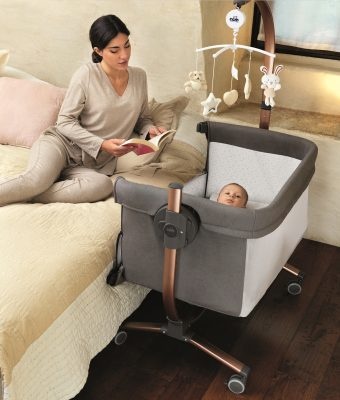
New parents face many challenges in the parenting process when they raise a magical little life for the first time. For new parents, a bassinet has irreplaceable advantages in early infant care.
Help babies fall asleep quickly: The enveloping design of the bassinet can simulate the womb environment, and its curved base or slight shaking function can trigger the baby’s calming reflex and help them fall asleep quickly. Studies show that newborns who use bassinets have an average 20%-30% shorter sleep time.
Portability: Portability is its core advantage. Most cradles weigh between 5-8kg and can be flexibly moved to scenes such as bedrooms and living rooms, making it convenient for parents to take care of them at any time. Being able to keep them nearby can also give you a chance to tend to other chores with more peace of mind.
Convenient night feeding: The average height of 75cm (equivalent to adult beds) can reduce the frequency of parents bending over and reduce the probability of postpartum lumbar muscle strain. At night, you can set up a co-sleeping bassinet next to the bed to comfortably monitor and care for your baby.
Downsides of a Bassinet
Despite the many advantages, the limitations of bassinets still need to be viewed rationally.
The short use cycle is the primary problem. Most babies need to transition to cribs at 4-6 months, resulting in lower cost-effectiveness (calculated by the average daily cost, bassinets are usually 3 times that of cribs).
Motor development restrictions should also be vigilant. Babies find it difficult to stretch their limbs freely in a small space, and continuous use for more than 6 months may affect the development of large movements such as turning over and crawling. Overloading is also prone to safety hazards.
In addition, cradles make it easy for babies to become dependent. Functions such as rocking or vibration in cradles can make crying babies fall asleep, but they can easily become dependent on these functions. Babies who rely on rocking to fall asleep for a long time may increase their number of night awakenings by 1.5 times when they transition to a static sleep environment.
Why Might You Need a Bassinet?
Now that we understand the vital basics of bassinets, it is safe to say that you will likely need a bassinet in the following circumstances.
Households with Limited Living Space
If you live in a small house (such as an apartment bedroom area of less than 10 square meters), you need a compact sleeping solution, and a foldable bassinet saves more space than a traditional crib. The standard bassinet only occupies 0.3 square meters, saving 40% space compared to a crib.
Cesarean Section Mothers
We all know or have witnessed the frenzy of postpartum struggles, especially for cesarean section mothers. Due to the pain of the wound, it is difficult to get up frequently to hold the baby. The automatic rocking function of the electric cradle can reduce physical exertion, and you don’t have to get up and hold the baby to rock.
High-Demand Baby Families
If your baby is not so quiet during sleep, even prone to crying, and can’t often fall asleep on his own, then you especially need a cradle. For babies who wake up as soon as they are put down and those with colic, regular rocking within 15 degrees can relieve discomfort (clinical trials have shown that the duration of colic attacks is reduced by 38%).
Co-sleeping
In the early months of parenting, you may go nights wondering whether they are breathing okay or if they are warm or cool enough. A bassinet takes away much of this anxiety because you can safely keep your baby right by your side and check on them as often as you need to.
To be clear, we recommend that parents sleep in the same room as their child, but not in the same bed.
Why You Might Not Need a Bassinet
Not all families need one. Families that are breastfeeding-focused may be better suited to a bedside sleeper, whose open design allows for on-demand feeding at night and avoids sleep interruptions caused by repeatedly getting up to hold the baby.
Budget-conscious families should weigh the cost. Mid-range bassinets typically cost $150-$300, while portable cribs with the same safety standards cost only $80-$150 and have a lifespan of 2-3 years.
Parents who advocate minimalism can transition directly to a swaddle + crib, as studies have shown that about 42% of babies can adapt to still sleep without additional comfort tools.
More importantly, some babies are sensitive to rocking: about 15% of babies experience vestibular system overstimulation, manifested as vomiting or refusing to sleep, and the bassinet becomes a burden at this time.
How Does a Bassinet Differ from Other Sleeping Solutions?
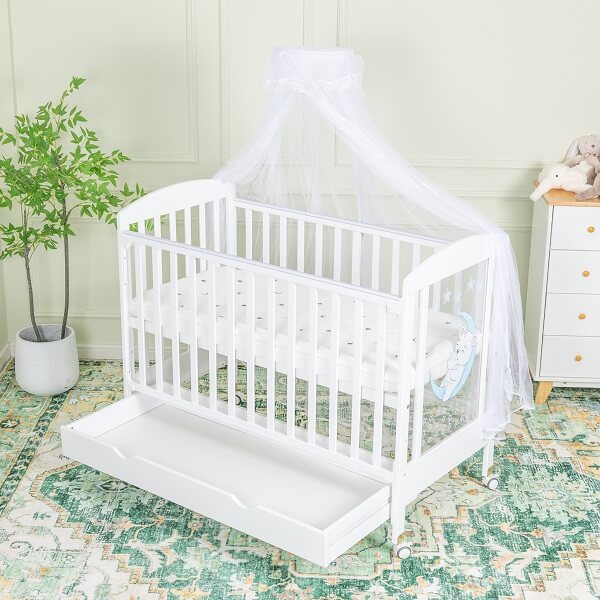
Among baby sleep products, there are significant differences in the design concepts and usage scenarios of bassinets and cribs, Pack and Play, and bedside sleepers. The following comparison is made from the dimensions of function, safety, and applicability to help parents make accurate choices.
1. Comparison with Cribs
- Size and mobility: The average size of a bassinet is 70×40cm, weighs 5-8kg, and can be carried with one hand; the standard size of a crib is 120×60cm, weighs more than 20kg, and needs to be placed in a fixed position.
- Use cycle: A bassinet is only suitable for 0-6 months (weight ≤9kg), and a crib can be used from birth to 3 years old (weight up to 50kg).
- Functional design: Bassinets are mostly equipped with curved bases or electric rocking functions to relieve intestinal flatulence; cribs require additional purchase of bed-in-bed or rocking accessories (cost increases by $50-$150).
- Nighttime soothing efficiency: The rocking function of the cradle can increase the speed of a baby falling asleep by 40%, while a crib requires parents to manually pat and coax.
2. Comparison with Pack and Play
- Structural design: Pack and Play is a foldable metal frame + soft mesh, focusing on portability and multi-function (including game area, diaper table); the bassinet is a fixed hard structure, focusing on sleep safety.
- Sleep support: The hardness of the bassinet mattress meets the ASTM F2194 standard (pressure ≤30mmHg), while the mattress of Pack and Play is generally soft, and long-term sleep may affect the development of the spine.
- Applicable scenarios: Pack and Play is more suitable for travel or temporary care (such as living room care), but it requires frequent assembly; the bassinet is the main sleeping equipment in the bedroom, which can be started automatically with one button.
3. Comparison with Bedside Sleeper
- Parent-child interaction method: The bedside sleeper is seamlessly spliced with the adult bed through the side guardrail, which is convenient for direct side contact during breastfeeding; the bassinet requires the baby to be picked up, which may interrupt the continuity of sleep.
- Space occupied: The width of a bedside sleeper usually matches that of an adult bed (80-100cm), while a cradle only requires 30-50cm of bedside space, making it more suitable for small bedrooms.
- User pain points: According to a survey, 67% of parents who use bedside sleepers reported that “babies are easily awakened by the sound of adults turning over”, and the independent space of the bassinet can reduce such interference.
4. Comprehensive Comparison Table
| Dimensions | Bassinet | Crib | Pack and Play | Bedside Sleeper |
| Optimal Use Period | 0-6 months | 0-3 years | 0-3 years | 0-6 months |
| Core Functions | Rocking to help baby sleep + Portable | Long-term sleep safety | Travel + gaming multi-function | Seamless parent-child contact |
| Nighttime Soothing Efficiency | ★★★★★ (Automatic shake) | ★★☆ (Human intervention required) | ★★★ (manual shake) | ★★★☆ (Convenient breastfeeding) |
| Space Requirements | 0.3㎡ | 1.2㎡ | 1㎡ (0.2㎡ after folding) | 0.8㎡ |
5. Purchase suggestions
Prefer bassinet: Premature babies/high-need babies, small families, and those who need frequent nighttime comfort.
Prefer crib: Families who pursue long-term cost-effectiveness and have ample space in the baby room.
Prefer Pack and Play: Families who travel frequently or need a temporary care area.
Prefer bedside sleeper: Parents who mainly breastfeed and want to maximize parent-child contact.
Conclusion
The selection of baby sleep products should be combined with the actual needs of the family and the developmental characteristics of the baby. The bassinet is an ideal transition solution for families with newborns aged 0-6 months due to its portability and rocking function.
When deciding whether to buy a bassinet, parents are advised to prioritize the space, budget, and baby sensitivity, and avoid blindly following the trend – only a scientifically adapted sleep solution can create a safe and comfortable growth environment for the baby.
Recommended Related Articles:
- Co-Sleeper Bassinet Guide: Attached to Parent’s Bed
- How to Get a Newborn to Sleep in the Bassinet?
- When to Move the Baby out of the Bassinet?
- Understanding Bassinet Safety Standards of 2024
- What Are the Different Types of Bassinets?
- Baby Travel Bassinets: The Ultimate Guide
- What to Look for in a Bassinet?
- Bassinet Vs Moses Basket: Which One Should You Choose?

